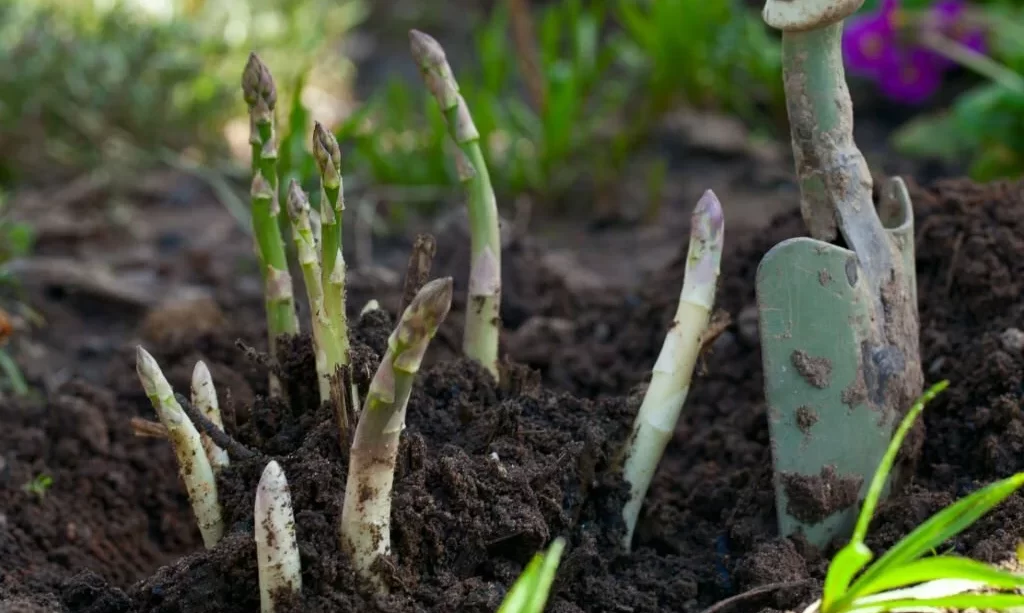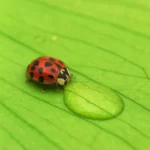Companion planting is a time-honored gardening practice that involves strategically planting different species of plants together to enhance their growth and well-being. In this guide, we’ll delve into the world of companion planting with a specific focus on asparagus. Asparagus is a remarkable perennial vegetable that rewards gardeners with delicious spears year after year, but it can benefit greatly from the right companions. We’ll explore which plants can be planted alongside asparagus to improve its health, deter pests, and create a thriving vegetable garden.
Asparagus Planting Basics
Before delving into companion planting, it’s important to establish a solid foundation for your asparagus plants. Here are some asparagus planting basics to keep in mind:
- Perennial Perseverance: Asparagus is a long-term commitment, with plants producing for up to 20 years. Choose a well-drained, sunny spot in your garden with plenty of space, as these plants can spread over time.
- Deep Roots: Asparagus plants have deep, extensive root systems that require well-prepared soil. Ensure the soil is loose, rich in organic matter, and free from weeds.
- Spacing and Depth: Plant asparagus crowns (young plants) about 18 inches apart in trenches around 8-12 inches deep. Gradually fill in the trenches as the plants grow, ensuring the crowns are not buried too deeply.
Companion Plants for Asparagus
Now, let’s explore some companion plants that can benefit your asparagus bed:
- Tomatoes: Tomatoes can help deter asparagus beetles, which are a common pest for asparagus. Planting them nearby can provide a natural form of pest control.
- Marigolds: Marigolds are known for their ability to repel nematodes, which can be harmful to asparagus roots. Interplanting marigolds with your asparagus can help protect their root system.
- Basil: Basil is a fragrant herb that can enhance the flavor of asparagus and is believed to improve the growth of neighboring plants. It’s a culinary companion that complements asparagus in the kitchen as well.
- Nasturtiums: Nasturtiums serve a dual purpose by acting as a trap crop for aphids and other pests that might otherwise attack asparagus. They attract these insects away from your main crop.
- Dill: Dill is known to attract beneficial insects like ladybugs and parasitic wasps, which can help control aphids and other pests that might affect your asparagus.
Companion plants can serve as allies for your asparagus, promoting healthier growth and deterring potential threats. By incorporating these compatible companions into your garden, you can create a thriving asparagus bed and enjoy the rewards of this perennial vegetable for years to come.
Pest-Repelling Companions
Companion plants that repel pests are invaluable allies for your asparagus. By naturally deterring common asparagus pests, you can reduce the need for chemical interventions. Here are some pest-repelling companions to consider:
- Chives: Chives, with their pungent aroma, can help deter aphids and other insect pests that may target asparagus. Planting them alongside your asparagus can provide a protective barrier.
- Tansy: Tansy is known for its strong fragrance, which can repel asparagus beetles and various other insect pests. It’s a potent deterrent that can shield your asparagus bed.
- Lavender: Lavender not only adds a delightful fragrance to your garden but also helps deter fleas, moths, and flies. These pests can potentially harm your asparagus crop, making lavender a valuable companion.
- Alliums (Garlic and Onions): Garlic and onions have natural repellent properties against a range of garden pests, including aphids and nematodes. Planting them alongside asparagus can contribute to a healthier growing environment.
Soil-Improving Companions
Asparagus thrives in well-drained, nutrient-rich soil. Some companion plants can assist in improving the soil quality and structure around your asparagus bed:
- Legumes (Peas and Beans): Legumes are nitrogen-fixing plants that enhance soil fertility. Planting them near your asparagus can help replenish nitrogen levels, which is crucial for healthy asparagus growth.
- Comfrey: Comfrey is often referred to as a “dynamic accumulator” because its deep roots mine nutrients from the soil and make them available to nearby plants. As a result, it can enrich the soil around your asparagus.
- Clover: Clover acts as a natural ground cover, helping to prevent soil erosion, suppress weeds, and add organic matter as it decomposes. This ground cover can be particularly beneficial for maintaining the soil quality around your asparagus.
Pollinator-Friendly Companions
To support a healthy ecosystem in your garden, it’s essential to attract pollinators. By including pollinator-friendly companions, you can enhance the pollination of your asparagus and other plants:
- Lavender: Lavender, with its fragrant blooms, is a favorite of bees and butterflies. By planting lavender near your asparagus, you can help ensure efficient pollination and the development of robust asparagus spears.
- Borage: Borage is not only a pollinator magnet but also an edible herb. Its attractive blue flowers are rich in nectar, making it a popular stop for bees and other pollinators.
- Calendula: Calendula flowers provide nectar and pollen for pollinators, contributing to the overall health of your garden. They also add a splash of color to your asparagus bed.
Companion planting with pest-repelling, soil-improving, and pollinator-friendly plants enhances the growing environment for your asparagus while promoting a harmonious ecosystem in your garden. By carefully selecting and arranging these companions, you can create a thriving and balanced vegetable garden that benefits both your plants and the local wildlife.
Planting Arrangements and Considerations
Creating a successful companion planting arrangement around your asparagus bed requires thoughtful planning and placement. Here are some key considerations:
- Spacing: Ensure that companion plants are spaced appropriately to avoid overcrowding. Adequate spacing allows each plant to receive sufficient light and nutrients.
- Companion Grouping: Consider grouping companion plants strategically. For example, place pest-repelling plants on one side of the asparagus bed and pollinator-friendly plants on another to create a balanced and efficient garden.
- Companion Heights: Pay attention to the height and growth habits of companion plants. Taller plants should be positioned where they won’t shade the asparagus, while shorter companions can fill the spaces closer to the ground.
- Soil Compatibility: Confirm that the companion plants have similar soil and water requirements to your asparagus to ensure that they thrive together.
- Seasonal Variations: Keep in mind that some companions may have different growth seasons or annual life cycles. Plan for these variations and consider planting annual companions that can be rotated with each growing season.
Companion Planting Challenges
While companion planting offers numerous benefits, it’s important to be aware of potential challenges that may arise:
- Competition for Resources: Companion plants can compete for water, nutrients, and space with your asparagus. Careful planning and proper spacing can help mitigate these issues.
- Unintended Allelopathy: Some plants may release substances that inhibit the growth of neighboring plants. Be cautious when selecting companions to avoid unintentional allelopathy.
- Invasive Companions: Certain companion plants, if left unchecked, can become invasive and overtake your garden. Regular maintenance and monitoring are crucial to prevent this.
- Companion Compatibility: Not all companion plants are suitable for each other or for your specific garden. Research the unique needs and potential interactions of your chosen companions to avoid negative consequences.
Conclusion
Companion planting with asparagus can be a rewarding and harmonious practice that enriches your vegetable garden. By strategically selecting companions that repel pests, improve soil quality, and attract pollinators, you can create a thriving ecosystem that supports your asparagus crop and benefits the overall health of your garden. While challenges may arise, with thoughtful planning and attention to the specific needs of your plants, you can navigate the world of companion planting and enjoy the many advantages it offers. So, roll up your sleeves, get ready to plant, and let your asparagus bed flourish in the company of its well-chosen companions.



